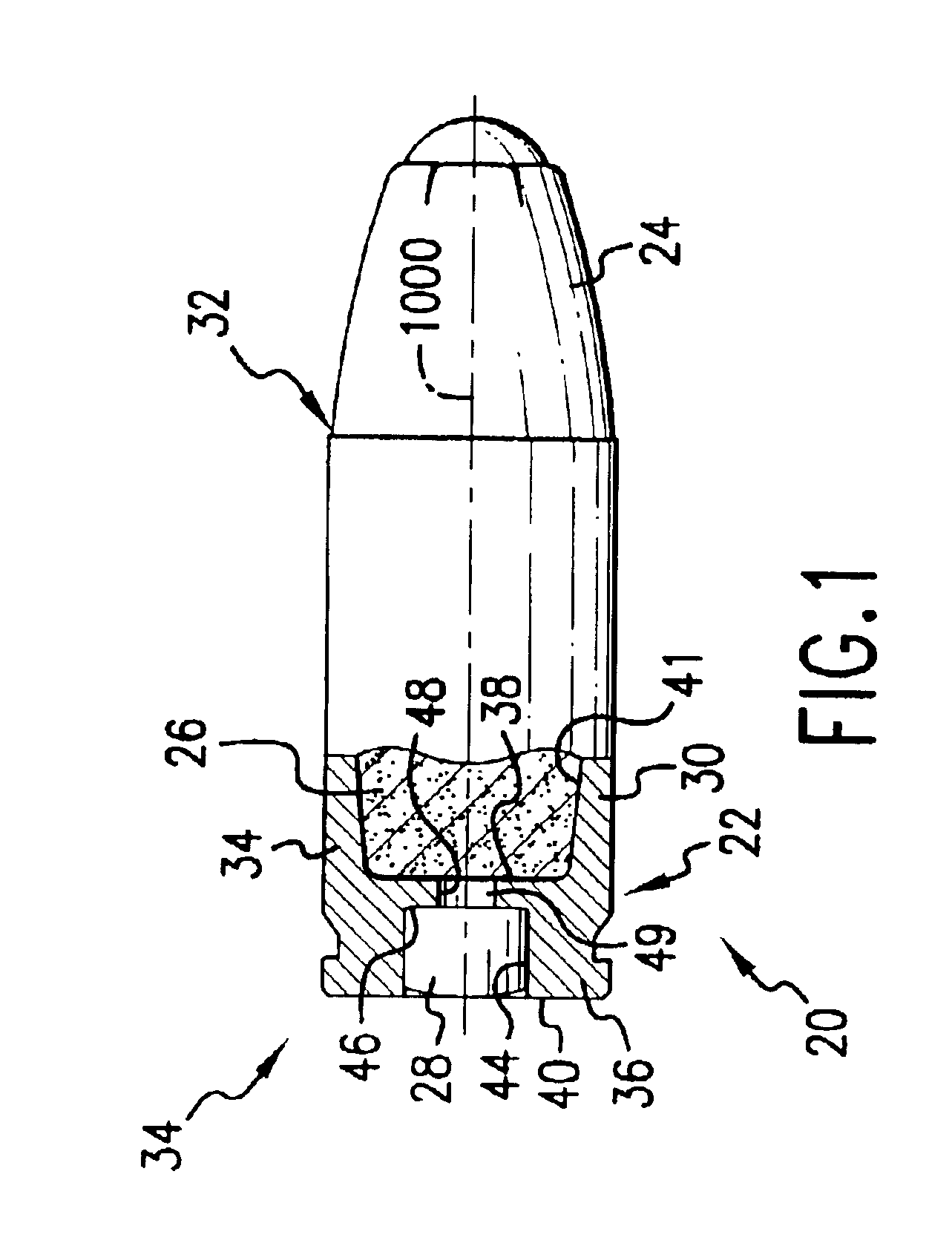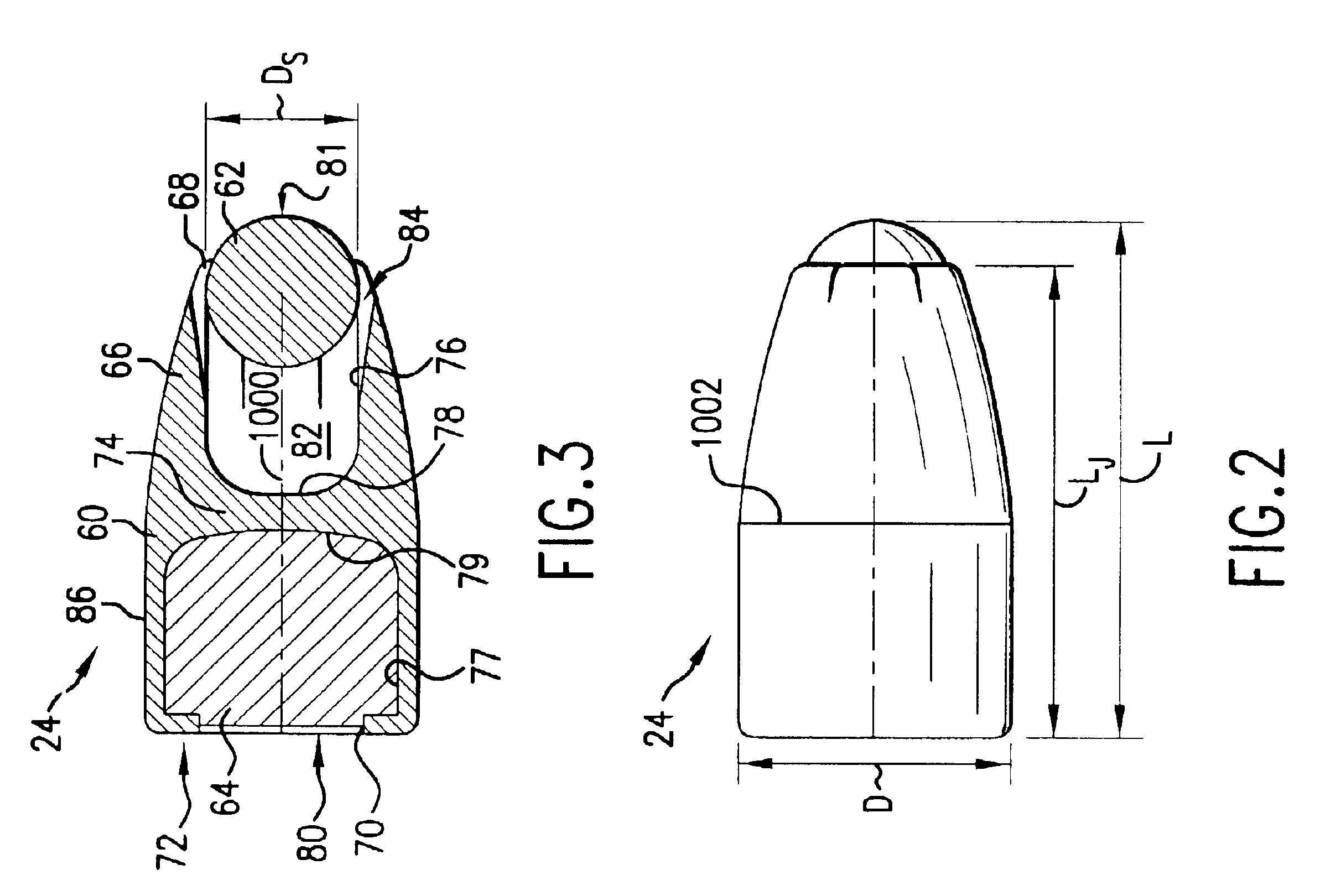Bullet with spherical nose portion
a bullet and nose portion technology, applied in the field of small arms ammunition, can solve the problems of difficult to produce jhp bullets that perform well, the exterior of the bullet is subjected to very high abrasive and cutting force, and the expansion characteristics of the bullet are improved, and the petal formation is convenient. , to achieve the effect of improving the expansion characteristics of the bullet, facilitating the formation of petal, and adding to the consistency and reliability of the bull
- Summary
- Abstract
- Description
- Claims
- Application Information
AI Technical Summary
Benefits of technology
Problems solved by technology
Method used
Image
Examples
first embodiment
a bullet 24 (FIGS. 2 & 3) consists essentially of a metallic jacket or body 60, a frontal element 62, and a rear core 64. The jacket 60 is advantageously formed from a copper alloy such as a brass as the unitary combination of: a sidewall 66 extending from a forward rim 68 to a rear rim 70 at an aft or rear end 72; and a central transverse web 74. The web separates front and rear compartments or nose and heel cavities within the bullet. The front and rear compartments are defined in major part by front and rear sidewall inner surfaces 76 and 77, respectively, along with front and rear surfaces 78 and 79 of the web. The exemplary bullet is shown as a secant ogive bullet having an overall length L and a jacket length Lj. The maximum diameter of the bullet is shown as D which is the diameter along the predominant rear portion of the bullet aft (rearward) of the border 1002 with the ogive.
The rear core 64 substantially fills the rear compartment and is held in place by a coning of the j...
PUM
 Login to View More
Login to View More Abstract
Description
Claims
Application Information
 Login to View More
Login to View More - R&D
- Intellectual Property
- Life Sciences
- Materials
- Tech Scout
- Unparalleled Data Quality
- Higher Quality Content
- 60% Fewer Hallucinations
Browse by: Latest US Patents, China's latest patents, Technical Efficacy Thesaurus, Application Domain, Technology Topic, Popular Technical Reports.
© 2025 PatSnap. All rights reserved.Legal|Privacy policy|Modern Slavery Act Transparency Statement|Sitemap|About US| Contact US: help@patsnap.com



